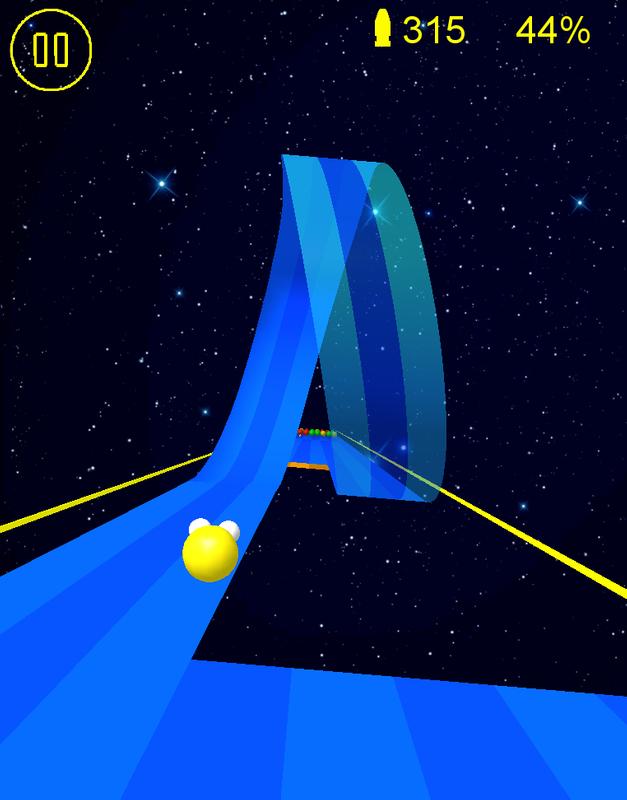

The exception to this rule occurs in the small number of places where you need to leap from one edge of the screen to the other, like the halfway point of level 3. In general, its better to make small, minute corrections rather than gigantic ones where you scroll all the way across to the other side, as its too easy to over-correct and end up falling off a gap in the floor. Don't ever lift up and set back down, as the ball follows where you are pressing and holding. Rolling Sky Strategies For Successįirst and foremost, always keep your finger on the screen and slide left or right. I hope your phone has accidental or intentional damage insurance. Most infuriatingly of all, you have to start the level over at 0% each time you lose a ball, no matter how close to 100% you had reached.
#DOES ROLLING SKY USE DATA FREE#
When you run out of balls (and you will run out of balls), you can get 10 more free by watching ads, or get unlimited by spending a little dough.īecause of how fast the terrain is moving beneath the ball, any lag is immediately deadly, so the better your device's specs the better you'll do, and obviously don't play in battery saver mode. You can pick any of the levels at any time without having to progress through previous levels, but trust me, you want to start at the beginning before really feeling the pain. How hard could it be? The problem is that the terrain is rapidly changing, with floors falling out from beneath you, tiles suddenly shifting position, vast chasms having to be jumped over, etc.Īll of this must also be done with your device in vertical position, which may be annoying if you have a large tablet and aren't playing on your phone. The only object you ever want to collide with is a gem. These obstacles can be literally anything - trees, hammers, big blocks, etc. The idea is to roll your ball continuously forward while not falling off the edges and not hitting any obstacles.


The basic concept on display is incredibly simple. If you have a few dozen (or hundred) hours to spare, you can grab Rolling Sky here: We're talking about difficulty on par or worse than some of those infamous NES platformers. New Brunswick, N.J.: Rutgers University Press, 2001.After lulling you into playing "just one more time" for the hundredth or so time, it will also dawn on you: this game is pure evil. Xueping Zhong, Zheng Wang, and Di Bai eds., Some of Us: Chinese Women Growing Up in the Mao Era. Weili Ye and Xiaodong Ma, Growing Up in the People’s Republic: Conversations Between Two Daughters of China’s Revolution. Wenqing Kang, “Male Same-Sex Relations in Socialist China.” The PRC History Review 3:1 (2018), 1–36. Lanham, MD: Rowman & Littlefield, 2004.189–209.Įmily Honig, “Socialist Sex: The Cultural Revolution Revisited.” Modern China 29:2 (2003), 143–175. Zheng Wang, “Gender and Maoist Urban Reorganization,” in Bryna Goodman and Wendy Larson eds., Gender in Motion: Divisions of Labor and Cultural Change in Late Imperial and Modern China. Berkeley: University of California Press, 2017. Zheng Wang, Finding Women in the State: A Socialist Feminist Revolution in the People’s Republic of China, 1949–1964.

Yvon Wang, “Heroes, Hooligans, and Knights-Errant: Masculinities and Popular Media in the Early People’s Republic of China.” Nan Nü 19 (2017), 316–356. Berkeley: University of California Press, 2002. 255–268.Įlizabeth Perry and Nora Dillon, “‘Little Brothers’ in the Cultural Revolution: The Worker Rebels of Shanghai,” in Susan Brownell, Jeffrey Wasserstrom eds., Chinese Femininities, Chinese Masculinities: A Reader. Berkeley: University of California Press, 2011.Įmily Honig, “Maoist Mappings of Gender: Reassessing the Red Guards,” in Susan Brownell and Jeffrey Wasserstrom eds., Chinese Femininities, Chinese Masculinities: A Reader. Gail Hershatter, The Gender of Memory: Rural Women and China’s Collective Past. Berkeley: University of California Press, 2007. Gail Hershatter, Women in China’s Long Twentieth Century.


 0 kommentar(er)
0 kommentar(er)
